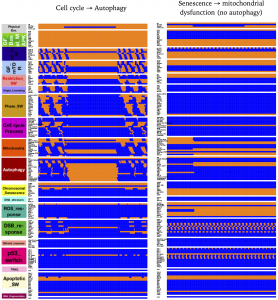Investigation of Autophagy: Modeling the Cellular Responds to the Undernutrition Condition
Class of 2021
Biography
- Education
-
Longhu No.1 High School, Zhengzhou, China
- The College of Wooster, BA in Biology, 2021
-
- Professional experience
- Teaching Assistant, The College of Wooster
- Language Tutor, The College of Wooster
IS Thesis Abstract
Autophagy, as a cell self-degradation process, responds to the low nutrition level environment via various signaling pathways. Autophagy is an important cellular response in keeping the cell homeostasis. The purpose for this Independent project is to figuring out whether the cell would undergo autophagy or other cellular activates with short pulse of nutrition supply. We used the Boolean model to represent the signaling pathways of the autophagy formation. Our goal for this project is to determine the cellular responses under different environmental conditions. We set three different experimental inputs: growth factors, amino acid, and glucose. The Boolean model shows that the cells would undergo autophagy if we block either amino acid or glucose. Additionally, our result suggests that the cells stay in the senescent state instead of go into autophagy because Reactive Oxygen species (ROS) prohibit the main Autophagy related genes (Atg). Overall, our model mimics the cellular responses under unfavored condition via autophagy successfully. Understanding the mechanism of autophagy could contribute to the medicine field in fighting with several diseases.

Webpage:
